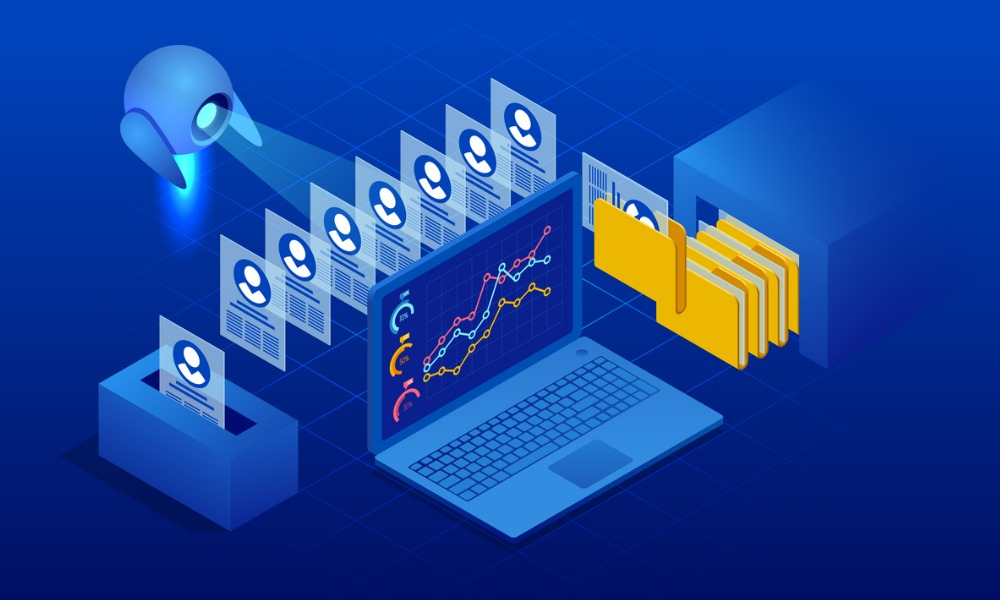
Want to know what the future of AI looks like? HRD asks AI for some self-reflective predictions

In part six of HRD’s ChatGPT series, we look at the ifs and whys of automating certain core functions.
Worries and anxieties around AI have been rising, especially when it comes to outright automation.
Earlier this year, Anu Madgavkar, of the McKinsey Global Institute told The Guardian that she estimates one in four employees will see more AI adopted into their role – adding that over half of organizations are chasing AI projects.
Employees, it seems, are still paranoid that AI will eventually come for their jobs – worried that they’ll be ousted by a robotic colleague. But is this fear really founded? Or is it all sound and fury signifying nothing?
“The fear is being stirred up even more by the media,” says Bonnie Low-Kramen, workplace expert and author of Staff Matters. “However, I believe it's useful to keep in mind that the media wrote about Siri and Alexa replacing people - that didn’t happen.
“Smartphones and apps on those phones didn’t replace people either. We saw how company leaders fired HR staff in order to outsource the function to a less expensive foreign country. The problems were so numerous - language barriers, time zone issues, and inconsistent and inaccurate information - and the outcry so loud that many companies brought the function back.
“Rather than feeling threatened by AI, employees would be best served to embrace these cool new tools for the utility they offer. They’re tools created by humans for humans to use, rather than to be a replacement.”
And when you look a little deeper, this opinion is shared across the HR sphere in general. In a recent interview with HRD, Subodha Kumar, a director at Fox School of Business, said that the common sense conundrum will always ensure humans are needed in the workplace.
According to data from Statistics Canada, as reported by CBC, between one and five years after robotics have been introduced to an organization, that organization will hire around 20% more employees in the aftermath. What’s more, Deloitte’s research found that Canadian companies invested $7.9 billion in AI and related technologies in 2020. But it’s not that technology is replacing humans, or HR for that matter, rather that it’s facilitating further growth.
The “uncanny valley” theory, in which people are mistrusting of something that looks human but isn’t, ultimately rules out the notion of a wholly robotic workforce. A study by researchers at the University of California, San Diego found that people's emotional response to a robot's facial expressions depended on how human-like the robot looked. Participants rated a robot with a highly human-like face as more creepy and untrustworthy than a robot with a less human-like face.
Reinforcing the fact that, as Low-Kramen tells HRD, people will always want to deal with people.
“Humans are social animals and we are meant to be together and interact with one another with speech and touch,” she says. “It’s human nature to want to feel respect, appreciated, valued, seen, and validated. Robots and AI cannot offer that to humans. Humans want the personal touch and are willing to pay money for it.”
In the spirit of collaboration, I asked ChatGPT what AI would look like in 2023 – and while the robot insisted it “couldn’t predict the future,” it did offer up some data-backed theories.
AI will continue to automate many tasks and processes, including those that are currently done by humans. This could have significant implications for the workforce, with some jobs becoming obsolete and new types of jobs emerging.
AI systems will become even better at tailoring experiences and recommendations to individual users, based on their preferences and behavior.
Computer vision technologies will continue to improve, allowing machines to "see" and interpret visual data more accurately and with greater context.
Rather than replacing humans, AI systems will become more integrated into the human experience, helping us to solve complex problems and make better decisions.
As for Low-Kramen, she believes it’ll be a blend of the familiar, but with much more advanced robotics. “I think people will be riding around in flying cars,” she tells HRD.
“Most people will be working from home and have very sophisticated home office setups. I believe some office functions will be automated but there will be an emphasis on flesh and blood people who provide checks and balances on the automation.”